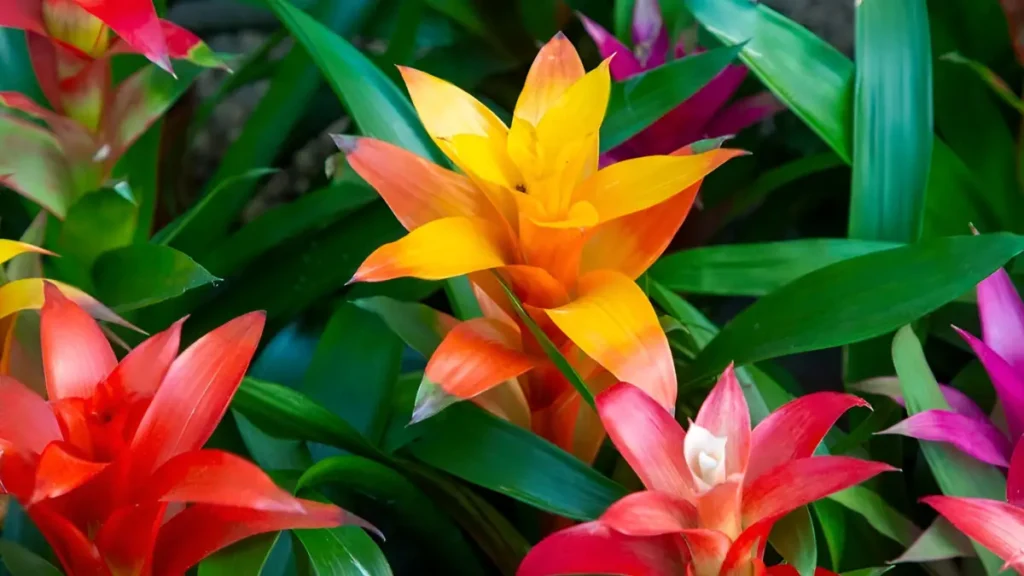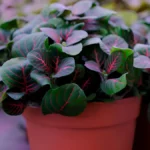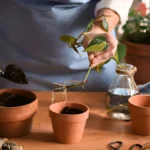A genus of bromeliad-blooming plants Indigenous to the tropical regions of the Americas is called Guzmania. These plants have pointy leaves and a cup-shaped core where they store water. They grow in rosette form. Bromeliads and pineapples are members of the same plant family. Popular among interior decorators and plant aficionados, guzmania are valued for their spectacular look and very minimal maintenance requirements. Here’s what you should know if you want to cultivate a Guzmania garden.
How to grow guzmania bromeliads:
- Locating the Ideal Site. The type of bromeliad you have will determine how much sun exposure it needs.
- The sun can scorch the foliage, so stay out of it. Positioned to get bright, indirect light during the day, certain species exhibit superior performance.
- Add potting mix to the pot up to half full. As you place the plant in its new container, make sure that its base is either level with the soil’s surface or slightly above it. It’s crucial to select a porous mixture that drains properly if you plan to grow them in soil.
Caring for guzmania:
Watering
- During the growing season, give the soil a good irrigation every one to two weeks, allowing it to dry out in between. For the winter, cut back on frequency to once every two or three weeks. Guzmania works best when kept somewhat dry. Plant loss and root rot are the outcomes of soggy soil.

Fertilizer
- Feed an orchid fertilizer diluted to half strength once or twice during the growing season. Apply fertilizer to the leaves using a spray bottle. In the summer, when the plant is dormant and not actively growing, do not fertilize.
Pruning of guzmania
- Trimming is not necessary for guzmania bromeliads until they reach maturity and blossom. Leaves that are dead or damaged can be pulled off the main stem at any time of year by pulling them off or trimming them. As a result, the plant is encouraged to focus its energy on producing offspring.
Propagating
- Using your sharp, sterile instrument, cut the faded bloom close to the base and remove it from the mother plant. Plant it in loose, well-draining soil in 4-inch pots. Maintain a little damp but not saturated soil and gradually let in more indirect light for newly planted areas.
Potting and Repotting
- Replace the soil with a new medium if it starts to get compacted. It could require an 8-inch pot, though clay and plastic pots work well. Repotting is rarely required because of its four to five-year lifespan.
Heating and Humidity
- Bromeliads from Guzmania do well in warm climates with lots of humidity. Place them somewhere where the evening low is still above 60°F. In summer, mist the plant to increase air humidity. Alternatively, the plant’s container could be set on a saucer that has water and pebbles in it.
Normal Pests and Plant Disorders
- Pests that are common to most houseplants, such as mites, aphids, scale, and mealybugs, can be drawn to Guzmania, which can lead to stunting and plant yellowing and dropping. Remove the blackened, wet roots and repot in a new, dry medium if you suspect root rot.
Conclusion:
Guatemal Guzmania species, which are native to Central and South America, love warm, humid climates and frequently grow as epiphytes on trees in rainforests. Their eye-catching, long-lasting blooms and diverse foliage make them popular in gardening. Worldwide, gardens and houses enjoy these plants for their decorative qualities, which also help to maintain the biodiversity of their original ecosystems. Give them the proper care as outlined in the above guidelines, and you can grow guzmania successfully.
Certainly! If you’d like to learn more, please consider following our WhatsApp Channel: Harvest Gardening
A frequently asked questions:
Q1. Is bromeliad guzmania toxic to cats?
A1. Indeed, the bromeliad Guzmania is thought to be toxic to cats. If your pet enjoys eating plants, you can use safe repellent sprays for both your cat and the plant, or you can put your bromeliad out of reach.
Q2. How to cultivate guzmania indoor?
A2. Guzmania should be grown indoors in bright, indirect light with soil that is routinely moist but not soggy. Direct sunlight should be avoided, and the leaves should be misted frequently.
Q3. How long does guzmania plant live?
A3. Depending on the growing conditions, a Guzmania plant’s lifespan might range from four to seven years.
Q4: How should I care for my guzmania plant after flowering?
A4: To promote fresh development, cut off the spent flower stalk after flowering. Keep the lighting bright and indirect and the humidity between 60 and 70 percent.
Q5: What are the ideal growing conditions for guzmania lingulata?
A5: Guzmania lingulata thrives in indirect light, high humidity, and temperatures between 60-80°F (16-27°C). It prefers well-draining soil and regular misting to maintain moisture without waterlogging.



